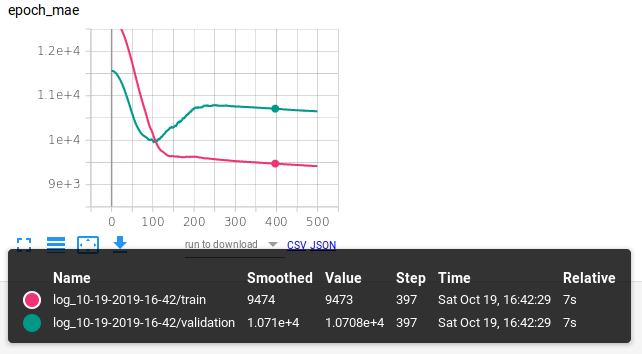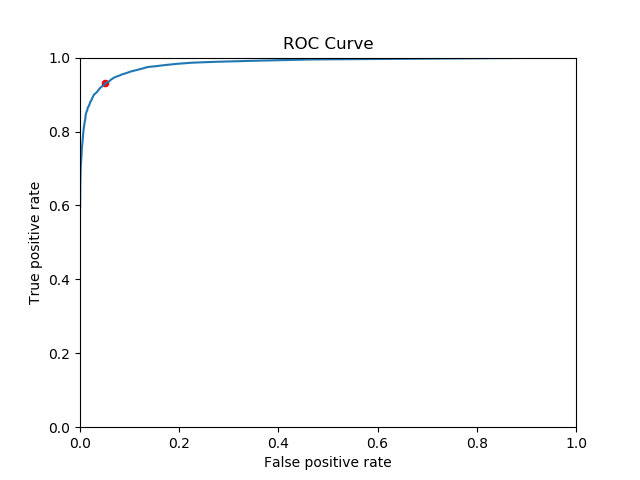In this project, I finished two tasks of deep learning practice. The first one is Approximating a Non-Linear Function and the second one is Building a Face Classifier.
Requirements
1
2
3
tensorflow-gpu==2.0.0
opencv-python==4.1.1.26
matplotlib==2.1.1
Approximating a Non-Linear Function
The input data file is a set of points. A matplotlib plot shows the visualization as below:

My goal was trying to train a model that maps the points with average L2 error on test set less than 200.
Firstly I trained the data with only one hiden layer, 16 batch size, 1e-2 learning rate and 500 epochs.
1
2
3
4
inputs = tf.keras.layers.Input(shape=(num_inputs,), name="inputs")
lyer = tf.keras.layers.Dense(64, use_bias=True)(inputs)
outputs = tf.keras.layers.Dense(1, use_bias=True)(lyer)
model = tf.keras.models.Model(inputs=inputs, outputs=outputs, name="monkey_model")
Then, I got this output:

L2 Error on Testing Set: 856.107943739
So I added more hidden layers. Soon it became overfit as the epoch_mae read from Tensorboard:

Finally after keeping tuning the parameters and layers, I ended up with 3 hiden layers, 16 batch size, 1e-2 learning rate and 500 epochs.
1
2
3
4
5
6
inputs = tf.keras.layers.Input(shape=(num_inputs,), name="inputs")
layer = tf.keras.layers.Dense(64, use_bias=True)(inputs)
layer = tf.keras.layers.Dense(64, activation='tanh')(layer)
layer = tf.keras.layers.Dense(64, use_bias=True)(layer)
outputs = tf.keras.layers.Dense(1, use_bias=True)(layer)
model = tf.keras.models.Model(inputs=inputs, outputs=outputs, name="monkey_model")

The L2 Error on Testing Set is 148.846732932 which reaches my goal – below 200.
Building a Face Classifier
Now I need to train the deep learning model and build a face classifier.
The face detection trainning data set was requested from Face Detection Dataset and Benchmark and you can download the numpy npz file here.
There 11038 training examples. And one sample picture is shown as below:

Note that the input is organized as a 4-D tensor of dimension NxHxWxC, where N corresponds to the number of examples, H is the height of input images, W is their width, and C is the number of channels per image. In general, the dataset has color images of 64x64 pixels (i.e., W=H=64 and C=3). The channels are organized in Blue-Green-Red (bgr) order.
The target is a single number: 1 if the corresponding input image shows a face, or 0 otherwise. Thus, the target tensor is 2D. It has shape Nx1.
By looking at Tiny DarkNet Network as a reference, finally I ended up like this:
1
2
3
4
5
6
7
8
9
10
11
12
13
14
15
...
in_lyer = tf.keras.layers.Input(shape=(64,64,3), name="inputs")
lyer = tf.keras.layers.Conv2D(16, 1, activation='relu')(in_lyer)
lyer = tf.keras.layers.MaxPooling2D(2)(lyer)
lyer = tf.keras.layers.Conv2D(32, 1, activation='relu')(lyer)
lyer = tf.keras.layers.Flatten()(lyer)
out_lyer = tf.keras.layers.Dense(1, use_bias=True, activation='sigmoid')(lyer)
model = tf.keras.models.Model(inputs=in_lyer, outputs=out_lyer, name="face_model")
model.summary()
model.compile(optimizer=tf.keras.optimizers.Adam(lr=lr),
loss='binary_crossentropy',
metrics=['binary_accuracy'])
The ROC curve is shown as below:

Finally I tried to run my classifer on other two images. The original image inputs are shown below:


And my outputs are:

